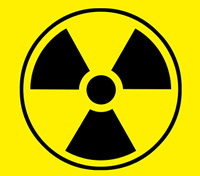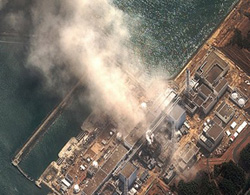Radiological Disaster
Overview
A nuclear and radiation accident is defined by the International Atomic Energy Agency
as "an event that has led to significant consequences to people, the environment
or the facility." Examples include lethal effects to individuals, large radioactivity
release to the environment, or reactor core melt."The prime example of a "major
nuclear accident" is one in which a reactor core is damaged and significant amounts
of radiation are released, such as in the Chernobyl Disaster in 1986. The impact
has been a topic of debate practically since the first nuclear reactors were constructed.
It has also been a key factor in public concern about nuclear facilities.Some technical
measures to reduce the risk of accidents or to minimize the amount of radioactivity
released to the environment have been adopted. Despite use of such measures, "there
have been many accidents with varying impacts as well near misses and incidents".
Hazardous Materials
Benjamin K. Sovacool has reported that worldwide there have been 99 accidents at
nuclear power plants.Fifty-seven accidents have occurred since the Chernobyl disaster,
and 57% (56 out of 99) of all nuclear-related accidents have occurred in the USA.Serious
nuclear power plant accidents include the Fukushima Daiichi nuclear disaster (2011),
Chernobyl disaster (1986), Three Mile Island accident (1979), and the SL-1 accident
(1961).Stuart Arm states, "apart from Chernobyl, no nuclear workers or members of
the public have ever died as a result of exposure to radiation due to a commercial
nuclear reactor incident.Nuclear-powered submarine mishaps include the K-19 reactor
accident (1961),the K-27 reactor accident (1968),and the K-431 reactor accident
(1985).We use hazardous materials in our homes and businesses every day. Small spills
occasionally occur, but these incidents generally cause the public little difficulty
other than traffic delays. In the event of a major spill authorities will instruct
you on the best course of action, however you should heed the precautions listed
below.

General Guidelines
- Stay upwind of the material if possible.
- Seek medical attention as soon as possible if needed.
- If there's an event indoors, try to get out of the building without passing through
the contaminated area. Otherwise, it may be better to move as far away from the
event as possible and shelter in place.
- If exposed, remove outer layer of clothes, separate yourself from them, and wash
yourself.
- In some circumstances, after being exposed to hazardous materials, it may be necessary
to be "decontaminated." Specially trained emergency personnel will perform decontamination
procedures, which may include the removal of personal items and cleansing of exposed
areas of the body. They will provide for medical attention if necessary.
Radiation Exposure
Small amounts of radiation are considered safe. In the unlikely event that New York
City became exposed to unsafe levels of radiation, there are steps you can take
to reduce your exposure. If you are exposed to small amounts of radiation over a
long time, it raises your risk of cancer. It can also cause mutations in your genes,
which you could pass on to any children you have after the exposure. A lot of radiation
over a short period, such as from a radiation emergency, can cause burns or radiation
sickness. Symptoms of radiation sickness include nausea, weakness, hair loss, skin
burns and reduced organ function. If the exposure is large enough, it can cause
premature aging or even death. You may be able to take medicine to reduce the radioactive
material in your body.

General Guidelines
- Radioactive materials become less radioactive over time. Stay inside until authorities
alert you the threat has passed.
- The greater the distance between you and the source of the radiation the better.
Authorities may call for an evacuation of people from areas close to the release.
- Put as much heavy, dense material between you and the source of the radiation as
possible. Authorities may advise you to stay indoors or underground for this reason.
Close and seal your windows and turn off any ventilation.